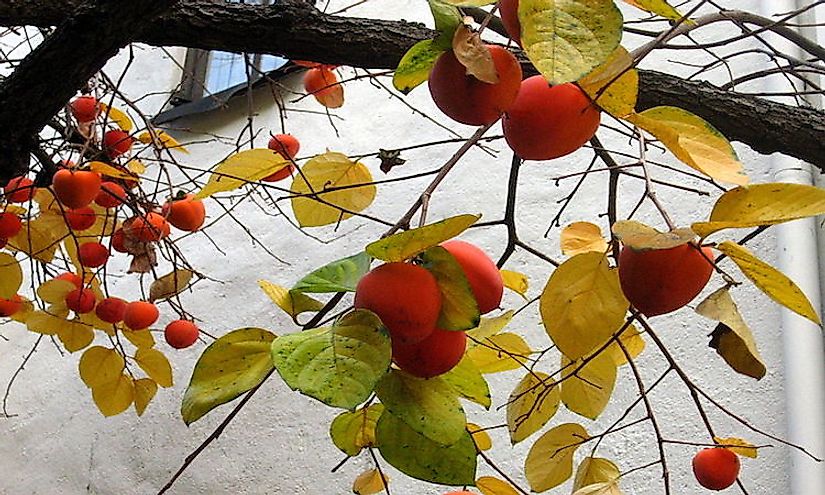The Leading Persimmon Producing Countries In The World

What Is Persimmon?
The persimmon is a tree-growing fruit that belongs to the Diospyros genus within the Ebenaceae family. Although persimmon is further divided into several species, the most common edible species is the Japanese variety. The smooth exterior of this fruit can be found in anywhere from a light yellowish orange to a dark reddish orange color. It grows to between .59 and 3.54 inches in diameter. Other edible varieties include: date-plum, American, black, velvet-apple, Indian, and Texas.
Its flavor can be classified as either astringent (due to a high level of tannins) or non-astringent. The astringent variety can only be eaten when fully ripened, whereas the non-astringent can be eaten while the fruit is still firm. Persimmon was known by ancient Greeks as the “fruit of the gods”.
Persimmon Cultivation
On average, the persimmon tree grows to over 32 feet in height and takes between 5 and 6 years to produce fruit on a commercial level. Persimmon trees, particularly the Japanese variety, thrive in subtropical and even temperate climates. During winter, it can tolerate temperatures as low as 10° fahrenheit. Persimmon crops require a well-drained soil and do not tolerate high levels of salt. In order to produce plump fruit, these orchards need between 3 and 4 feet of controlled irrigation water in addition to natural rainfall. At harvest time, the fruit is picked and placed in picking buckets to prevent bruising.
Uses For Persimmon
Persimmon is used primarily for culinary purposes and mainly eaten raw. Other presentations include dried and cooked. When eaten raw, most people bite into it like an apple, although others prefer to peel the fruit. In several Asian countries, the fruit is harvested and dried outside. In this form it is eaten as a snack or dessert. In Korea, however, this dried persimmon is the basis for a spicy drink and when fermented, a vinegar. Persimmon leaves are used to make herbal teas as well. The fresh fruit is often used in cakes, cookies, pudding, and pies throughout North America.
World’s Top Producers Of Persimmon
In 2013, world production of persimmon reached 4.6 million tonnes. The top three leading persimmon producing countries are discussed below:
China
Production in China accounted for 43% of this total with 2 million tonnes produced. The most commonly harvested persimmon here is the previously mentioned Japanese variety. Large tracts of persimmon production can be found along the Yellow river and covers approximately 254 square miles. Of this large production rate, between 70% and 80% is sold as fresh fruit. The remainder is processed.
South Korea
The second leading persimmon producer in the world is South Korea, which produces just .3 million tonnes. The persimmon holds a special cultural value in this country and is seen as a symbolic fruit due to its bitter to sweet transformation. The agricultural industry in this country is actively trying to improve persimmon production. As part of this effort, in 2004, Korea significantly increased its persimmon exports to Hong Kong.
Japan
Japan takes the number 3 spot with a .26 million-tonne production level, just shy of South Korea. This number does not represent an increase and actually remains the same from the production rates of 2002. The primary locations for persimmon production include the following prefectures: Wakayama, Fukuoka, Nara, and Gifu. The majority of persimmon produced in Japan is sold locally, although small amounts are exported to Southeast Asian countries.
The Leading Persimmon Producing Countries In The World
| Rank | Country | Production (millions of tons) |
|---|---|---|
| 1 | China | 2.0 |
| 2 | Republic of Korea | 0.3 |
| 3 | Japan | 0.26 |
| 4 | Brazil | 0.12 |
| 5 | Azerbaijan | 0.08 |







